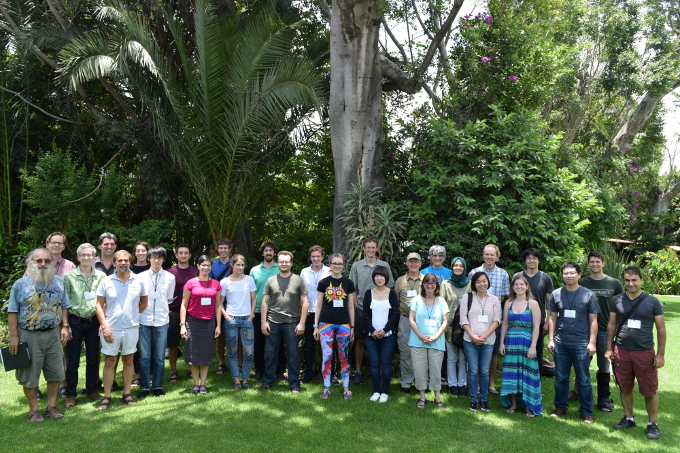Low Dimensional Topology and Gauge Theory (17w5040)
Organizers
David Auckly (Kansas State University)
Anar Akhmedov (University of Minnesota)
Yi-Jen Lee (Chinese University of Hong Kong)
Adam Levine (Princeton University)
Daniel Ruberman (Brandeis University)
Description
The Casa Matemática Oaxaca (CMO) will host the "Low Dimensional Topology and Gauge Theory" workshop from August 6th to August 11th, 2017.
In geometry, one studeis a collection of objects and a notion of equivlence. For example in plane geometry, one will consider triangles and when two triangles are congruent, or similar. In topology a typical object is a manifold. In the field of geometry a manifold is a shape that is locally equivalent to Euclidean space. For example the surface of a ball has small patches that correspond to small patches of a plane (think of a map of western Kansas). One of the fundamental problems in geometric topology is to classify manifolds up to homeomorphism and diffeomorphism. This means up to continuous deformation or smooth deformation. The difference is that folding a crease is continuous, but not smooth. Classification means create a list with exactly one copy of each manifold. Two-dimensional manifolds are classified by their genus and orientability. Perelman's proof of the Poincar\'e conjecture in dimension three was a major step forward in the classification problem for three-dimensional manifolds. Four-dimensional manifolds are extremely complicated, and it is the first dimension where the smooth and topological classifications diverge. While we understand much about the collection of $4$-manifolds, there is still much to learn.
In the classification problem demonstrating that two manifolds are different requires an invariant. In the early 1980s Simon Donaldson showed how to construct invariants out of solutions to equations that have a certain structure that was first uncovered in models of electrodynamics -- the solutions to these equations have different forms for different manifolds. Equations with this type of structure are known as Gauge theories. In the 1990s a new system of equations was introduced and studied -- the Seiberg-Witten equations. The latest gauge theoritic invariants are known as Heegaard-Floer invariants. This theory was developed in the early 2000s by Ozsv\'ath and Szab\'o. Results that are uncovered in one gauge-theoretic framework may often be extended or better understood when translated into other frameworks. This translation process will be the main theme of this workshop
The Casa Matemática Oaxaca (CMO) in Mexico, and the Banff International Research Station for Mathematical Innovation and Discovery (BIRS) in Banff, are collaborative Canada-US-Mexico ventures that provide an environment for creative interaction as well as the exchange of ideas, knowledge, and methods within the Mathematical Sciences, with related disciplines and with industry.
The research station in Banff is supported by Canada's Natural Science and Engineering Research Council (NSERC), the U.S. National Science Foundation (NSF), Alberta's Advanced Education and Technology, and Mexico's Consejo Nacional de Ciencia y Tecnología (CONACYT). The research station in Oaxaca is funded by CONACYT.






